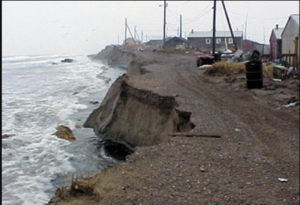What’s your mental picture of the impacts of climate change?
Starving polar bears, prolonged drought, rising sea levels, inundated cities, melting glaciers?
But have you ever thought about the loss of cultural components because of climate change?
If your answer is “no”, you’re in the same boat as most people. There are two main reasons for this. First, much of the research on climate change focuses on its biophysical impacts. These make regular headlines in the major media and shape many people’s assumptions about climate change. Second, the loss of potentially unfamiliar cultures and values is difficult to quantify and potentially to empathize with.
Climate change and culture
This is especially the case for communities so threatened by climate change that they must contemplate migrating from their homelands.
On the one hand, climate-induced migration might cause them to lose part or all of their cultural beliefs and values. On the other hand, a community’s strong attachment to those same cultural beliefs and values might actually impede them from migrating to survive.
Climate displacement can trigger loss of culture
The people of the Himalayan village of Dhye in Nepal, which is located about 12,000 feet above sea level, are dependent on natural resources for their livelihood. As a result of climate change, glacier melt has accelerated, and the land where the villagers grow crops has turned dry and barren.

Families who live in the village gathered to decide whether they should stay or move. 17 of the 26 families decided to leave the village.
Tsering Larkke Gurung, in an article published in The New York Times, shared, “I couldn’t stay. My children and I were not able to survive from crop failure.”
The villagers migrated nearly one mile downhill to a location where there’s plenty of water. But raising yaks, which they’ve been doing for many generations, is almost impossible in their new settlement as they don’t have the legal right to grazing land. Yaks not only provide wool and milk to the community people but also have cultural significance.
For the people of Dhye Village, no longer being able to raise yaks represents the loss of “culture, communal identity and sense of place.”
Culture can inhibit necessary climate migration

Shishmaref is a small indigenous community in coastal Alaska where people depend on the subsistence hunting of sea mammals for their livelihood. For the people of Shishmaref, the ocean is part of their social and cultural life.
Rising sea levels, melting ice, floods and erosion have made their land uninhabitable. The people of Shishmaref want to relocate to a new place to survive, but they are also afraid of losing their village lifestyle and culture. In particular, they’re concerned that they would lose their long tradition of hunting sea animals and being beside the ocean.
In this case, which in many ways is the opposite of the case from Dyhe, cultural factors have become a hindrance in their adaptation to climate change.
What can we do to bring justice to these people?
Climate-change induced loss of cultural components draws much less political and international attention than its biophysical effects. We need to be more aware of the need to protect culture, and especially in vulnerable communities, from the impacts of climate change.

I echo the climate scientists who say that we need more activists than climate scientists to solve the climate crisis. This is crucial time to focus on non-physical loss and damages resulting from climate change.
We can’t all be scientists but we can be activists. We can join local climate protests/campaigns or extend our helping hands to support protests and campaigns like “Fridays For Future” financially.
The people of Dhye and Shishmaref do not like to see themselves portrayed in the media as “helpless climate migrants,” as many of them do not want to leave their homes. But they need more support to bring them justice and help them adapt to climate change in the short run.
